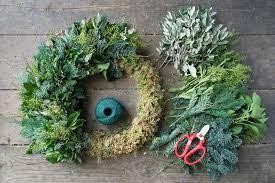Toxic mold in drywall is a pervasive issue that can compromise indoor air quality, structural integrity, and human health. Mold thrives in moist environments, and drywall, with its porous nature, is a prime breeding ground when exposed to water damage. This 2,500-word article delves into the history of mold-related concerns, the current understanding of toxic mold in drywall, key concepts, benefits of early detection, challenges in remediation, and future trends in mold prevention and management. It includes a review of critical insights, answers to five frequently asked questions, and a conclusion to guide homeowners, property managers, and health-conscious individuals.
History of Toxic Mold Concerns
Early Recognition of Mold Issues
Mold has been a concern for centuries, though its toxicity was not fully understood until modern times. Historical records from ancient civilizations, such as Egyptian and Roman texts, mention damp-related decay in structures but lack specific references to mold’s health impacts.
-
Middle Ages: Damp castles and homes were associated with respiratory ailments, though the link to mold was unclear.
-
19th Century: Industrialization led to poorly ventilated buildings, increasing mold prevalence. Physicians began noting correlations between damp environments and illness.
-
20th Century: The term “sick building syndrome” emerged in the 1970s, with mold identified as a key contributor.
Rise of Toxic Mold Awareness
The late 20th century marked a turning point in understanding toxic mold, particularly species like Stachybotrys chartarum (black mold).
-
1980s-1990s: High-profile lawsuits in the U.S. linked mold exposure to severe health issues, raising public awareness.
-
2000s: The CDC and WHO published guidelines on indoor mold, emphasizing its role in respiratory and neurological symptoms.
-
Legislation: States like California introduced laws (e.g., Toxic Mold Protection Act of 2001) mandating disclosure of mold issues in real estate.
Current State of Toxic Mold in Drywall
Prevalence and Causes
Toxic mold in drywall is a global issue, exacerbated by modern construction practices and climate change. Drywall, made of gypsum and paper, absorbs moisture readily, creating ideal conditions for mold growth.
-
Common Causes:
-
Water leaks from plumbing or roofs.
-
Flooding or storm damage.
-
Poor ventilation in bathrooms, kitchens, or basements.
-
High humidity levels (above 60%).
-
-
Statistics:
-
The EPA estimates that 30-50% of U.S. homes have mold issues.
-
A 2023 study found that 20% of inspected drywall samples in flood-prone areas tested positive for toxic mold.
-
Health Impacts
Exposure to toxic mold can cause a range of health issues, particularly for vulnerable populations like children, the elderly, and immunocompromised individuals.
-
Short-Term Effects:
-
Allergic reactions (sneezing, itchy eyes, skin rashes).
-
Respiratory issues (coughing, wheezing, asthma exacerbation).
-
-
Long-Term Effects:
-
Chronic sinus infections.
-
Neurological symptoms (headaches, memory issues, fatigue).
-
Rare cases: Mycotoxin-related illnesses from prolonged exposure to Stachybotrys.
-
Key Concepts in Identifying Toxic Mold in Drywall
Visual Signs
Recognizing mold in drywall requires vigilance, as early signs are often subtle.
-
Discoloration:
-
Yellow, green, black, or gray patches on walls.
-
Stains that spread over time, often in irregular patterns.
-
-
Texture Changes:
-
Warped, soft, or crumbling drywall.
-
Bubbling or peeling paint over affected areas.
-
-
Hidden Mold:
-
Mold behind wallpaper or baseboards, detectable only through inspection.
-
Growth inside wall cavities, requiring professional assessment.
-
Odor and Environmental Clues
Mold often produces a distinctive smell, even before visual signs are evident.
-
Musty Odor:
-
A persistent earthy or damp smell in specific areas.
-
Stronger near water-damaged zones (e.g., under sinks).
-
-
Environmental Indicators:
-
Condensation on windows or walls.
-
Chronic humidity issues (e.g., bathroom without exhaust fans).
-
Recent water damage events (e.g., leaks, floods).
-
Testing Methods
Confirming toxic mold requires specialized testing, as not all molds are harmful.
-
DIY Testing:
-
Home mold test kits (e.g., swab or petri dish kits) for preliminary screening.
-
Limitations: May not distinguish toxic from non-toxic species.
-
-
Professional Testing:
-
Air sampling to measure spore counts.
-
Surface sampling (swabs or tape lifts) to identify mold species.
-
Moisture meters to detect hidden water sources.
-
|
Testing Method |
Pros |
Cons |
Cost Range (USD) |
|---|---|---|---|
|
DIY Test Kits |
Affordable, easy to use |
Limited accuracy, no species identification |
$10-$50 |
|
Air Sampling |
Detects airborne spores, comprehensive |
Requires lab analysis, costly |
$200-$500 |
|
Surface Sampling |
Identifies specific mold types |
Invasive, may miss hidden mold |
$150-$400 |
|
Moisture Meters |
Non-invasive, locates water sources |
Does not confirm mold presence |
$50-$200 |
Benefits of Early Detection
Health Protection
Identifying mold early prevents prolonged exposure, reducing health risks.
-
Allergy Prevention:
-
Early intervention stops spore spread, minimizing allergic reactions.
-
-
Chronic Illness Avoidance:
-
Reduces risk of long-term respiratory or neurological issues.
-
-
Vulnerable Populations:
-
Protects children, elderly, and immunocompromised individuals from severe effects.
-
Property Preservation
Early detection preserves the structural integrity and value of a property.
-
Cost Savings:
-
Minor remediation (e.g., drying and cleaning) is cheaper than replacing entire drywall sections.
-
Prevents secondary damage (e.g., wood rot, insulation degradation).
-
-
Real Estate Value:
-
Mold-free properties maintain higher market value and appeal.
-
Avoids legal issues during property sales.
-
Environmental Benefits
Addressing mold promptly reduces the need for extensive renovations, which can be resource-intensive.
-
Reduced Waste:
-
Less drywall and construction material sent to landfills.
-
-
Energy Efficiency:
-
Fixing leaks and improving ventilation lowers energy costs.
-
Challenges in Mold Remediation
Identification Difficulties
Distinguishing toxic mold from benign species is complex and often requires professional expertise.
-
Misdiagnosis:
-
Visual inspection alone may confuse mold with dirt or mildew.
-
Some toxic molds (e.g., Aspergillus) resemble harmless ones.
-
-
Hidden Growth:
-
Mold in wall cavities or under flooring is hard to detect without invasive methods.
-
Remediation Costs
Remediation can be expensive, especially for severe infestations.
-
Factors Affecting Cost:
-
Extent of mold spread (e.g., single room vs. entire house).
-
Need for structural repairs (e.g., replacing drywall, flooring).
-
Professional fees for testing and remediation.
-
-
Average Costs:
-
Minor remediation: $500-$1,500.
-
Extensive remediation: $3,000-$10,000+.
-
Health and Safety Risks
Remediation poses risks if not done properly.
-
Spore Dispersal:
-
Disturbing mold without containment can spread spores, worsening contamination.
-
-
Chemical Exposure:
-
Improper use of biocides or cleaners can harm occupants.
-
-
DIY Risks:
-
Lack of protective gear (e.g., respirators, gloves) increases exposure.
-
Future Trends in Mold Prevention and Management
Advanced Detection Technologies
Emerging technologies are improving mold detection accuracy and efficiency.
-
Smart Sensors:
-
IoT-enabled moisture and humidity sensors for real-time monitoring.
-
Alerts homeowners to potential mold risks before growth begins.
-
-
AI and Imaging:
-
AI-powered thermal imaging to detect hidden moisture and mold.
-
Machine learning models to predict mold risk based on environmental data.
-
Sustainable Building Materials
Innovations in construction materials aim to reduce mold susceptibility.
-
Mold-Resistant Drywall:
-
Products with fiberglass or antimicrobial coatings (e.g., CertainTeed’s AirRenew).
-
Reduces moisture absorption compared to traditional gypsum drywall.
-
-
Eco-Friendly Alternatives:
-
Hemp-based or recycled materials with natural mold resistance.
-
Breathable wall systems to improve ventilation.
-
Policy and Education
Governments and organizations are prioritizing mold prevention through policy and awareness.
-
Building Codes:
-
Stricter regulations for ventilation and moisture control in new constructions.
-
Incentives for retrofitting older buildings with mold-resistant features.
-
-
Public Awareness:
-
Campaigns to educate homeowners on mold risks and prevention.
-
Subsidized testing and remediation for low-income households.
-
Review
This article provides a comprehensive overview of toxic mold in drywall, covering its historical context, current prevalence, and identification methods. The health risks, particularly from species like Stachybotrys, underscore the importance of early detection, which offers significant benefits in protecting health, preserving property, and reducing environmental impact. However, challenges such as high remediation costs and hidden mold growth highlight the need for professional intervention and advanced technologies. Future trends, including smart sensors and mold-resistant materials, promise to mitigate risks. The table comparing testing methods and detailed cost estimates equips readers with practical tools for decision-making. This guide is valuable for both novices and knowledgeable readers seeking actionable insights.
Discover More: Transforming Your Bathroom Oasis: Decoding the Costco Jacuzzi Bath Remodel Cost
Frequently Asked Questions (FAQs)
1. What are the first signs of toxic mold in drywall?
Early signs include musty odors, discoloration (yellow, green, or black patches), and warped or soft drywall. Hidden mold may require professional testing to detect.
2. Can I clean toxic mold myself?
Small areas (<10 sq. ft.) can be cleaned with proper precautions (e.g., gloves, respirators, containment). Larger infestations or toxic species like Stachybotrys require professional remediation.
3. How can I prevent mold in drywall?
Maintain humidity below 60%, fix leaks promptly, ensure proper ventilation, and use mold-resistant drywall in high-risk areas like bathrooms.
4. How long does mold remediation take?
Minor remediation takes 1-3 days, while extensive projects (e.g., whole-house) may take 1-2 weeks, depending on damage and testing requirements.
5. Are home mold test kits reliable?
DIY kits are affordable but less accurate than professional testing. They can indicate mold presence but often fail to identify toxic species.
Read More Also: How to Organize Under-Bed Clutter: A Comprehensive Guide
Conclusion
Toxic mold in drywall is a serious but manageable issue with significant health, structural, and financial implications. Understanding its signs—discoloration, musty odors, and texture changes—enables early intervention, which is critical for minimizing risks. While remediation poses challenges, advancements in detection technologies and mold-resistant materials offer hope for more effective prevention. Homeowners and property managers should prioritize regular inspections, proper ventilation, and prompt repairs to safeguard their spaces. By staying informed and proactive, individuals can mitigate the dangers of toxic mold and maintain healthy, resilient environments.






